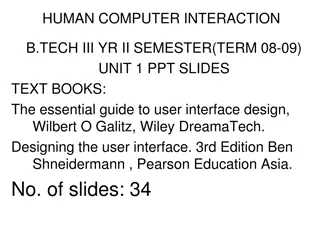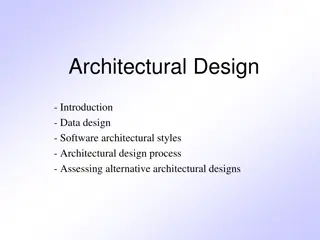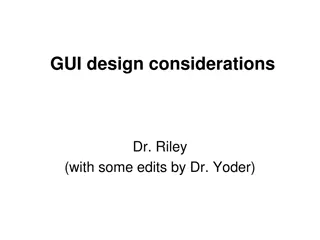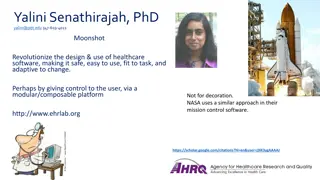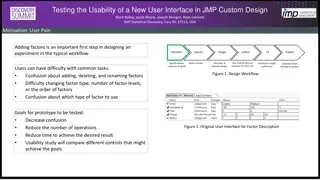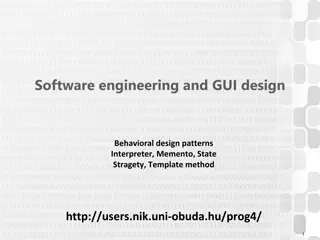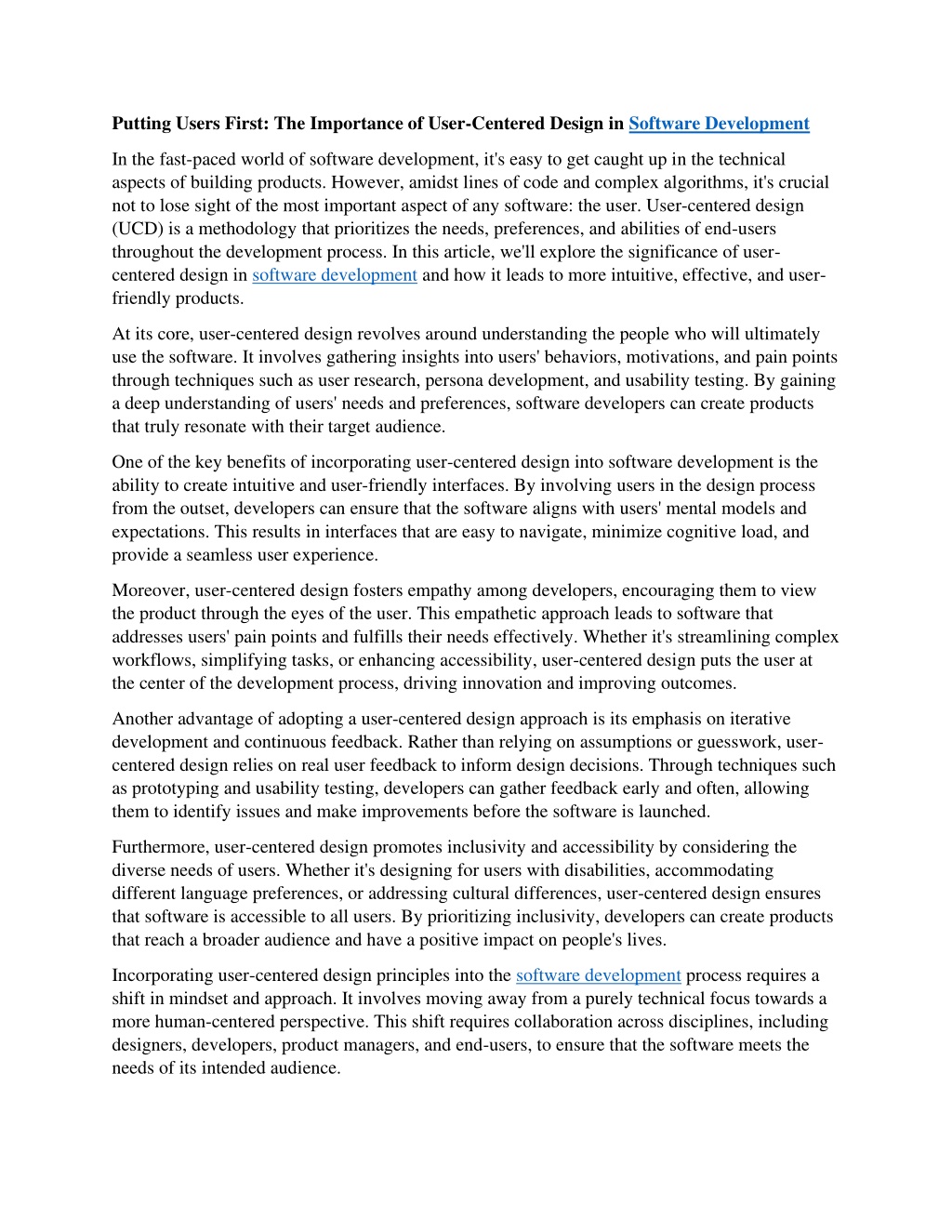
Putting Users First: The Importance of User-Centered Design in Software Developm
In the fast-paced world of software development, it's easy to get caught up in the technical aspects of building products. However, amidst lines of code and complex algorithms, it's crucial not to lose sight of the most important aspect of any softwa
Download Presentation

Please find below an Image/Link to download the presentation.
The content on the website is provided AS IS for your information and personal use only. It may not be sold, licensed, or shared on other websites without obtaining consent from the author. Download presentation by click this link. If you encounter any issues during the download, it is possible that the publisher has removed the file from their server.
E N D
Presentation Transcript
Putting Users First: The Importance of User-Centered Design in Software Development In the fast-paced world of software development, it's easy to get caught up in the technical aspects of building products. However, amidst lines of code and complex algorithms, it's crucial not to lose sight of the most important aspect of any software: the user. User-centered design (UCD) is a methodology that prioritizes the needs, preferences, and abilities of end-users throughout the development process. In this article, we'll explore the significance of user- centered design in software development and how it leads to more intuitive, effective, and user- friendly products. At its core, user-centered design revolves around understanding the people who will ultimately use the software. It involves gathering insights into users' behaviors, motivations, and pain points through techniques such as user research, persona development, and usability testing. By gaining a deep understanding of users' needs and preferences, software developers can create products that truly resonate with their target audience. One of the key benefits of incorporating user-centered design into software development is the ability to create intuitive and user-friendly interfaces. By involving users in the design process from the outset, developers can ensure that the software aligns with users' mental models and expectations. This results in interfaces that are easy to navigate, minimize cognitive load, and provide a seamless user experience. Moreover, user-centered design fosters empathy among developers, encouraging them to view the product through the eyes of the user. This empathetic approach leads to software that addresses users' pain points and fulfills their needs effectively. Whether it's streamlining complex workflows, simplifying tasks, or enhancing accessibility, user-centered design puts the user at the center of the development process, driving innovation and improving outcomes. Another advantage of adopting a user-centered design approach is its emphasis on iterative development and continuous feedback. Rather than relying on assumptions or guesswork, user- centered design relies on real user feedback to inform design decisions. Through techniques such as prototyping and usability testing, developers can gather feedback early and often, allowing them to identify issues and make improvements before the software is launched. Furthermore, user-centered design promotes inclusivity and accessibility by considering the diverse needs of users. Whether it's designing for users with disabilities, accommodating different language preferences, or addressing cultural differences, user-centered design ensures that software is accessible to all users. By prioritizing inclusivity, developers can create products that reach a broader audience and have a positive impact on people's lives. Incorporating user-centered design principles into the software development process requires a shift in mindset and approach. It involves moving away from a purely technical focus towards a more human-centered perspective. This shift requires collaboration across disciplines, including designers, developers, product managers, and end-users, to ensure that the software meets the needs of its intended audience.
One of the challenges of implementing user-centered design in software development is balancing user needs with technical constraints and business requirements. While it's important to prioritize user needs, developers must also consider factors such as scalability, performance, and security. Finding the right balance between user-centric design and technical feasibility is essential for creating successful software products. If you want to get services for software development AJ Software UK could be a life savior for you is this matter. In conclusion, user-centered design is a fundamental aspect of software development that prioritizes the needs, preferences, and abilities of end-users. By putting users at the center of the development process, developers can create products that are intuitive, effective, and user- friendly. User-centered design fosters empathy, encourages collaboration, and promotes inclusivity, resulting in software that meets the needs of its intended audience. As technology continues to evolve, user-centered design will remain a cornerstone of successful software development, ensuring that products resonate with users and make a meaningful impact on their lives. User-centered design is not just a methodology; it's a mindset that shapes the way we approach software development. By prioritizing users' needs and preferences, developers can create products that truly make a difference in people's lives. In an increasingly digital world, user- centered design will continue to be a driving force behind innovation and progress in software development. Author: (David Hawk) David Hawk is an Expert in Digital Marketing having 7+ years of experience in this industry.





